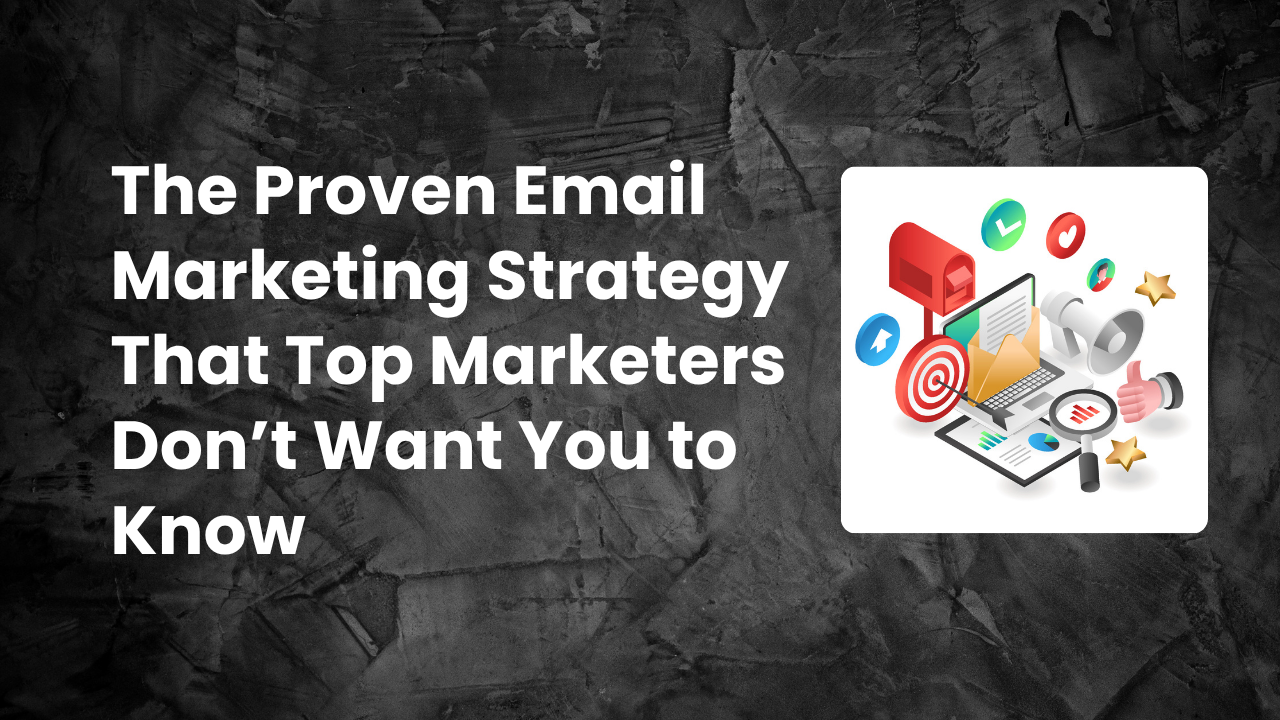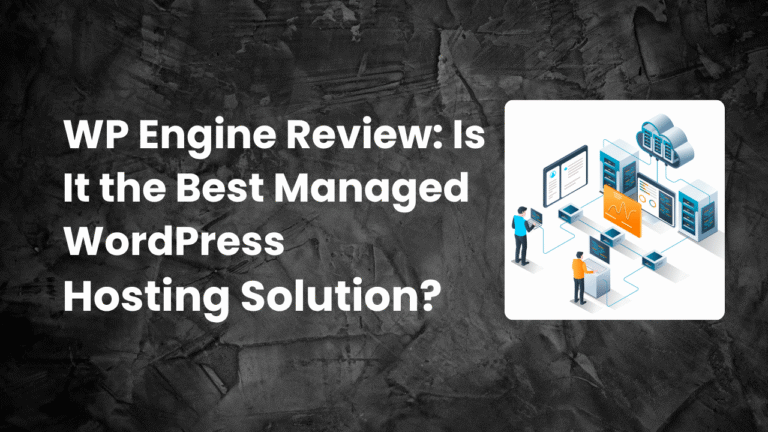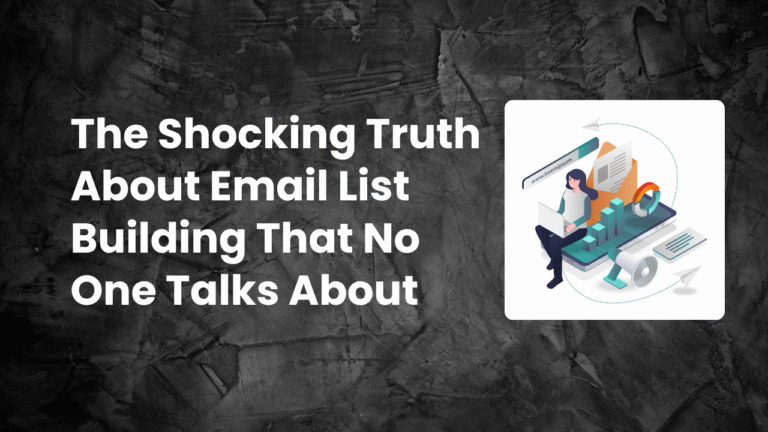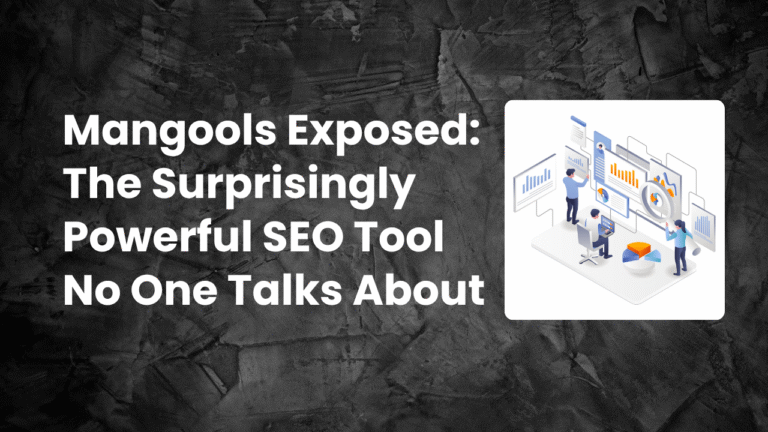Email marketing strategy remains one of the most powerful tools in the digital marketer’s arsenal. While social media trends come and go, email marketing continues to deliver high engagement, stronger customer loyalty, and exceptional ROI—when it’s done right.
Let’s begin with some numbers.
According to Statista, global email users are expected to reach 4.73 billion by 2026 (Statista, 2023). And research from Litmus reveals that for every $1 businesses spend on email marketing, they get an average return of $36 (Litmus, 2023).
Those aren’t just impressive stats—they’re proof that a well-crafted email marketing strategy is more than a “nice-to-have.” It’s a game-changer.
But here’s the problem: many businesses still struggle with email. Some send emails too often. Others barely email their list at all. Some rely on one-size-fits-all campaigns that get ignored, while others just blast promos and hope for the best.
If you want your email marketing to actually work—to build trust, generate leads, and convert sales—you need a clear strategy.
In this guide, you’ll learn exactly how to plan and implement an effective email marketing strategy from scratch. Whether you’re a startup, a blogger, or an established brand, this blueprint will walk you through everything you need to succeed.
Why Email Marketing Strategy Still Matters
Despite the noise on platforms like Instagram, LinkedIn, or TikTok, email remains the most direct and personal channel we have. Unlike social algorithms that filter your content, your email lands straight in someone’s inbox. It gives you full control over your audience and message.
And it’s not just for sales.
A smart email marketing strategy lets you:
- Welcome new subscribers and make a great first impression
- Share content that builds trust and positions you as an expert
- Promote offers without sounding pushy
- Re-engage cold leads
- Upsell existing customers
It’s not about sending more emails. It’s about sending the right emails to the right people at the right time.
Step 1: Set Clear, Measurable Goals
Before you write a single email or create a form, step back and define what you actually want from email marketing.
Do you want to:
- Grow your newsletter subscriber base?
- Increase traffic to your blog or website?
- Sell digital products, courses, or services?
- Improve customer retention?
- Build a community?
Set goals that are measurable, like:
- “Grow my email list by 1,000 subscribers in 90 days”
- “Increase email click-through rates by 10%”
- “Convert 5% of subscribers into paying customers by the end of Q3”
These goals help you reverse-engineer your campaigns and track what’s working—and what isn’t.
Step 2: Know Your Audience Like a Close Friend
You can’t build an effective email marketing strategy if you don’t understand who you’re emailing.
Your audience is not just a list of emails. They are people—with dreams, frustrations, fears, and needs.
Build detailed customer personas by exploring:
- Demographics: Age, location, gender, job title
- Psychographics: Interests, pain points, buying behavior
- Challenges: What keeps them stuck?
- Desires: What are they hoping to achieve?
You can use surveys, polls, customer interviews, or analytics data to gather insights.
Once you understand your audience, you can write emails that speak directly to them. That personal connection is what makes your emails stand out in a crowded inbox.
Step 3: Choose the Right Email Marketing Platform
You’ll need an email service provider (ESP) to manage your campaigns, automate sequences, and track performance.
Some beginner-friendly platforms include:
- MailerLite (great for simplicity and automation)
- ConvertKit (designed for creators and bloggers)
- AWeber (solid for small businesses)
- ActiveCampaign (robust for automation and CRM)
- Brevo (formerly Sendinblue) for affordable email + SMS
Most platforms offer:
- Signup forms
- Automation tools
- List segmentation
- Drag-and-drop editors
- A/B testing
- Analytics dashboards
Pick a platform that fits your current needs, but make sure it can scale as you grow.
Step 4: Build a Quality Email List (The Right Way)
Forget buying email lists. That’s a fast way to hurt your sender reputation and get blacklisted.
Instead, attract subscribers organically by offering something of value in exchange for their email address. That something is your lead magnet.
Examples include:
- A downloadable PDF guide
- A video training or tutorial
- A checklist or worksheet
- A discount code
- A free trial or sample
Make sure the offer:
- Solves a real problem
- Is highly relevant to your target audience
- Leads naturally into your product or service
Place your opt-in forms strategically:
- Homepage
- Blog sidebar or after a post
- Exit-intent popups
- Landing pages
- Social media links
Keep it simple. Just ask for their name and email address to reduce friction.
Step 5: Segment Your Audience for Better Results
One of the most overlooked components of a successful email marketing strategy is segmentation.
Instead of sending the same email to everyone, divide your audience into groups based on:
- Interests
- Engagement history
- Purchase behavior
- Demographics
- Source of signup
Why? Because personalized emails perform better. According to Campaign Monitor, marketers who use segmented campaigns see a 760% increase in revenue (Campaign Monitor).
For example, send one email to new subscribers welcoming them, and another to returning customers offering a VIP discount. Same list, different journey.
Step 6: Create Your Email Sequence (Automated or Manual)
A strategy needs structure. That’s where email sequences come in.
Think of a sequence as a mini-story arc you send to your subscribers. You can build sequences for:
- New subscribers (welcome sequence)
- New customers (onboarding)
- Abandoned carts
- Re-engagement campaigns
- Launches and promotions
Example: Welcome Sequence (5 emails over 7 days)
- Email 1: Deliver lead magnet + brief intro
- Email 2: Share your story or mission
- Email 3: Provide value (tips, case study, blog post)
- Email 4: Handle an objection or share a testimonial
- Email 5: Make your first soft pitch or offer
Automating these emails saves time and ensures every new subscriber has a consistent experience.
Step 7: Write Emails That People Actually Read
Your emails need to stand out and be worth reading. That starts with strong subject lines.
Subject lines should:
- Spark curiosity
- Offer a clear benefit
- Use urgency (if appropriate)
- Be under 50 characters when possible
Next, the email body.
Use:
- A friendly, conversational tone
- Short paragraphs and whitespace
- Personalization (like first names)
- Storytelling, where relevant
- One clear call to action (CTA)
Avoid sounding like a corporate robot. You’re writing to a human being. Make it feel like a 1-on-1 conversation.
Step 8: Balance Value with Promotion
Don’t just email your list when you have something to sell. That’s a fast way to burn trust and increase unsubscribes.
Use the 80/20 rule: 80% value-driven content, 20% promotional.
Types of value-packed emails:
- How-to guides or tutorials
- Behind-the-scenes updates
- Case studies
- Industry news with commentary
- Personal stories or lessons
- Free tools or resources
When you consistently deliver value, subscribers are more likely to trust your recommendations—and eventually buy.
Step 9: Track, Measure, and Optimize
No email marketing strategy is complete without analytics. You need to track what’s working and make adjustments over time.
Key metrics to monitor:
- Open Rate: Are your subject lines working?
- Click-Through Rate (CTR): Is your content engaging?
- Unsubscribe Rate: Are you emailing too often or missing the mark?
- Conversion Rate: Are your emails driving real results?
Use A/B testing to improve performance:
- Subject lines
- Send times
- CTAs
- Email format (text vs. HTML)
Sometimes small tweaks can lead to massive improvements.
Step 10: Stay Legal and Respectful
Email marketing is powerful—but it comes with rules.
To stay compliant:
- Use double opt-in if possible
- Include an unsubscribe link in every email
- Never use deceptive subject lines
- Only email people who’ve given explicit consent
- Comply with laws like GDPR and CAN-SPAM
Respect your audience. Trust is everything.
Bonus: Tools to Make Email Strategy Easier
Here are a few tools to help streamline your email marketing strategy:
- Canva: Design email graphics and headers
- Grammarly: Polish your email copy
- Figma: Design email layouts or templates
- Zapier: Automate email integrations
- Notion or Trello: Plan out email sequences
You don’t need to be a tech wizard. Just use what helps you stay consistent.
Conclusion
Email marketing isn’t just about sending messages. It’s about building trust. Creating value. Starting conversations. Guiding people toward meaningful decisions.
With a well-thought-out email marketing strategy, you can:
- Grow a loyal, engaged audience
- Turn cold leads into warm prospects
- Convert subscribers into lifelong customers
You don’t need a huge list. You don’t need to be perfect. You just need to show up consistently with the right message at the right time.
So take a deep breath. Start simple. And build your email marketing strategy one step at a time.





